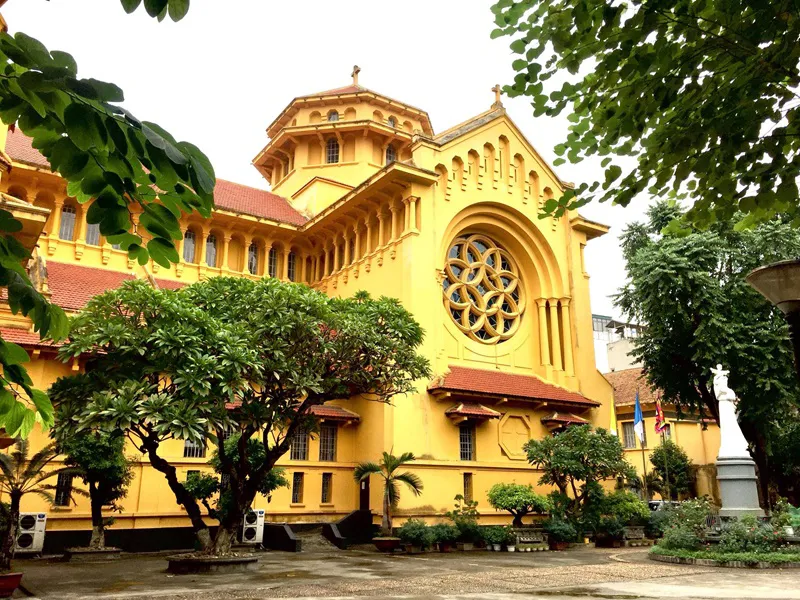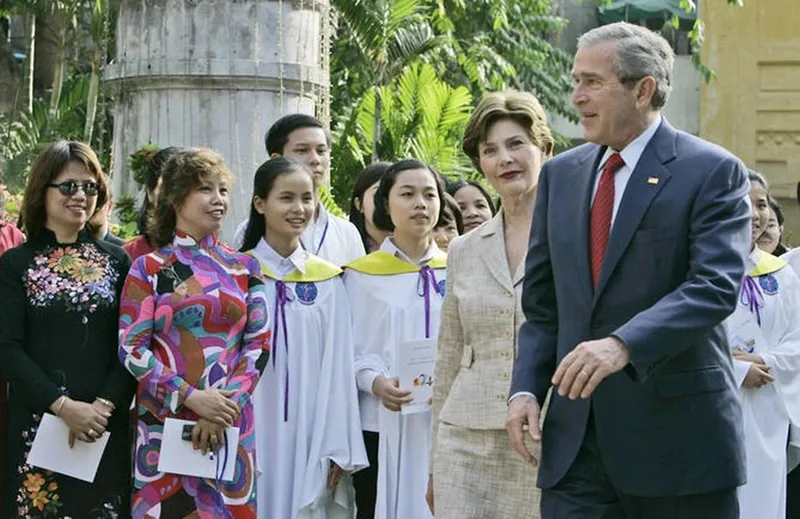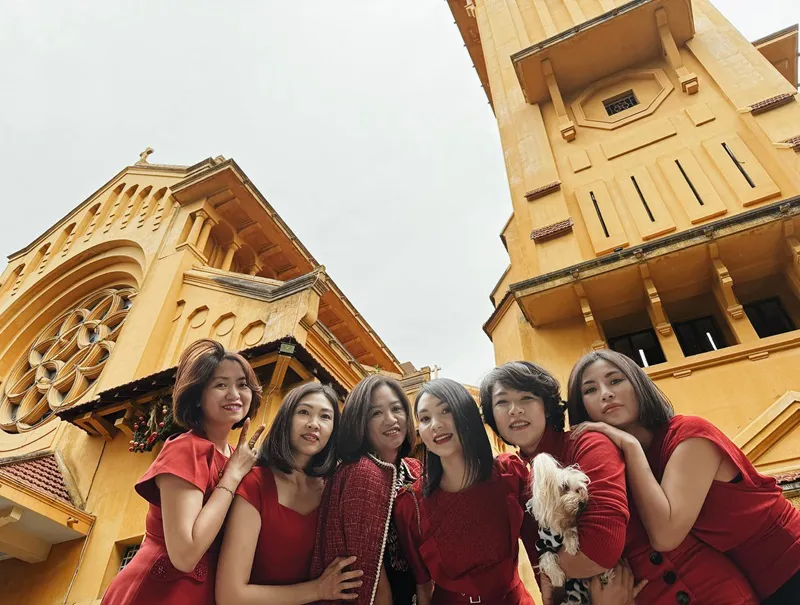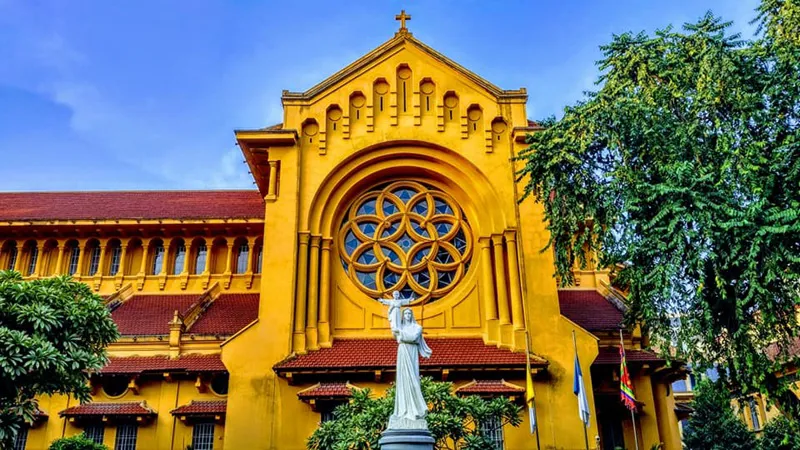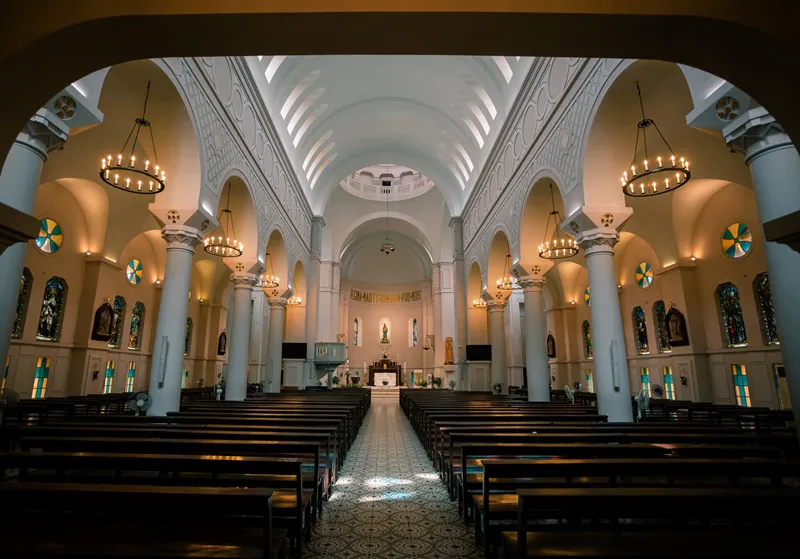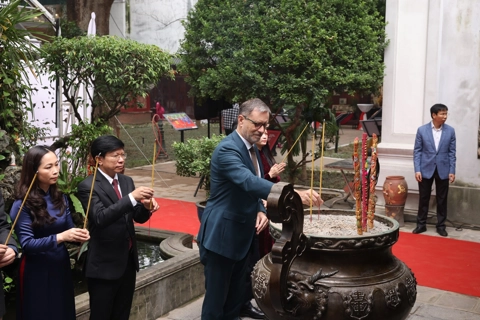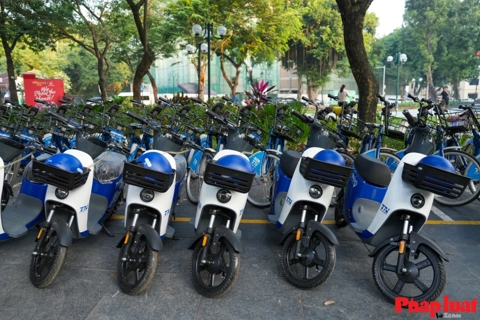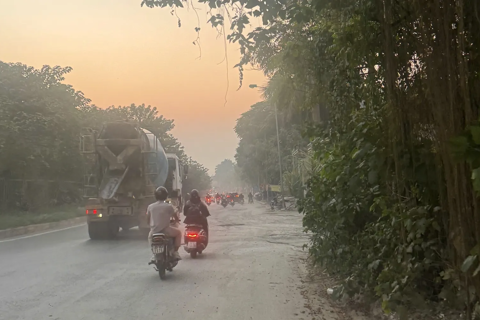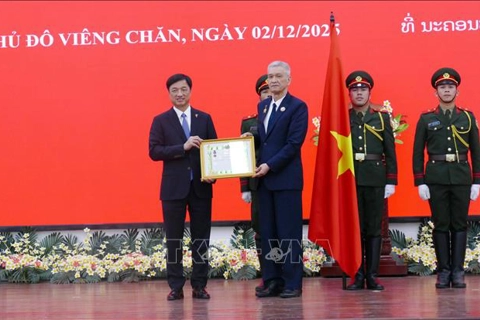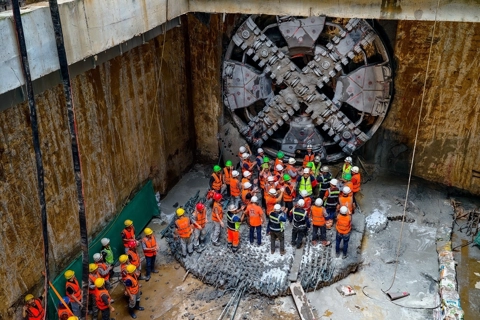Cua Bac: Oldest church with unique architecture in Hanoi
The landmark has many distinctive features infused with French architectural style, making it a highlight in Hanoi's urban space, where a former US president attended services.
Located in downtown Ba Dinh, Cua Bac Church is a distinctive fusion of European and Vietnamese architectural styles.
Where the US President attended church service
| Cua Bac Church is a famous tourist site in Hanoi. Photo: Ngua Nui Da |
A magnificent Roman Catholic structure has been brought to life by harmoniously blending ancient Eastern architectural features with classical Catholic church decorations and the surrounding natural setting.
Thanks to its unique architecture, Cua Bac Church has become a popular tourist destination. Quynh Mai, a visitor from Haiphong City, said: "When I came across Cua Bac Church with its distinctive yellow color, a bit old-fashioned and historical air, I was amazed and can't help taking pictures."
Located near an elite area of embassies and government offices, the church is frequented by foreign worshippers. In November 2006, Cua Bac Church was chosen to host a joint meeting of Vietnamese Catholics and Protestants. The event on the morning of November 19 that year was attended by US President George W. Bush and his wife Laura Bush, who were on an official visit to the country on the occasion of APEC Vietnam 2006.
| Former US President George W. Bush and his wife Laura Bush leave Cua Bac Church in Hanoi after the morning service on Sunday, November 19, 2006. Photo: White House/Eric Draper |
After the service, the President remarked: "Laura and I just had a moment to talk with God in a church here in Hanoi. We were touched by the simplicity and beauty of the moment. We are very grateful to the congregation for allowing us to come and worship with them."
Exceptional architecture
Construction of Cua Bac Church began in 1925. It was inaugurated in 1930 when Apostolic Vicar Pierre Marie Gendreau (whose Vietnamese name was Dong) was in charge of the diocese and Father Joseph-Antoine Dépaulis was in charge of the parish. The church is located at 56 Phan Dinh Phung Street, Quan Thanh Ward, Ba Dinh District, Hanoi. Since it is opposite the North Gate or Cua Bac of the Thang Long Citadel, it is commonly known as the Cua Bac Church.
It was originally intended to be called the Church of the Vietnamese Martyrs. However, since the Catholic martyrs in Vietnam at that time had only been beatified and not yet canonized, the Holy See requested that the title be changed to Church of Our Lady of the Martyrs.
| The quaint church is a popular photo destination for both locals and travelers to Hanoi. Photo: Quynh Mai |
In 1959, it was renamed the Church of Our Lady of Hanoi by the Apostolic Vicar Joseph-Marie Trinh Nhu Khue.
In terms of its architecture, the church consists of a large rectangular space with two rows of parallel columns on either side, divided into a small reception area and a solemn area for Holy Mass, commonly known as the sanctuary.
Between these two areas is a large transitional space under the dome, with a large space on the right, where the altars dedicated to God and the saints are located, and the sacristy on the left, commonly known as the vestry. The interior was structured and decorated purely according to European church architecture.
The highlight of the church is the bell tower, the only one of its kind. Photo: English Catholic mass in Hanoi |
French architect and town planner Ernest Hébrard, who designed and supervised the construction, created an asymmetrical architectural space with a soaring bell tower on one side of the main hall. This distinguishes Cua Bac Church from most Catholic buildings in Vietnam, which were built with strict symmetry.
There are opinions that this was Hébrard's special creativity to fit in with the surrounding landscape. It is just a clever application of Renaissance principles for building churches. That's why the Cua Bac church has not only a bell tower as a highlight but also a dome in the central area.
The tiled roofs covering the bell tower, dome, and main and secondary areas create a familiar sight, reminiscent of communal houses, temples, and pagodas in villages throughout Vietnam. The windows for natural light and ventilation are all covered with shed roofs, except for the large decorative ones with anti-glare glass. The green trees around the building make the landmark more nature-friendly.
| Interior of Cua Bac Church. |
Today, Cua Bac Church is one of the most important churches in the capital, along with Saint Joseph's Cathedral and Ham Long Church. Nearly a century has passed and it has undergone several renovations, but the church still retains its medieval features, offering another must-see destination in Hanoi.

